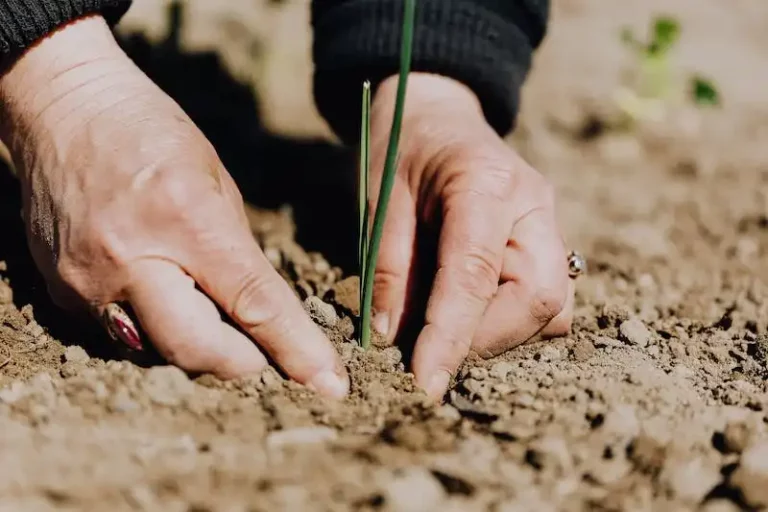If you’re looking to start growing your own persimmon trees, there are a few things you should consider. These native American trees are well-suited to both wet and dry climates, making them a versatile option for many gardeners. When planting your persimmon tree, be sure to choose a location with well-drained soil and plenty of sunlight. Persimmons thrive in full sun, but can tolerate some shade.
Before turning your attention to the planting process, it’s important to determine which variety of persimmon tree you’d like to grow. There are two main types of persimmons: astringent and non-astringent. Astringent varieties, like the Algonquin and Prok, need to ripen fully before they can be eaten, while non-astringent varieties, like the Fuyu and Jiro, can be eaten even when they’re still firm.
Once you’ve chosen a variety, it’s time to begin the planting process. Persimmons can be grown from seed, but it’s recommended to start with a grafted tree for quicker and more reliable results. Dig a hole that is wide and deep enough to support the roots, and place the tree in the hole, making sure that the bud union is above the soil line. Fill in the hole with soil and water thoroughly.
As your persimmon tree grows, you’ll need to provide proper care and maintenance. Pruning, removing dead or broken branches, and thinning the tree’s branches in the dormant season will help promote healthy growth and fruit production. You should also be mindful of soil-borne diseases and pests that can affect persimmons. Proper overwintering and appropriate fungal treatments can help protect your persimmon tree from these challenges.
When it comes to harvesting persimmons, timing is crucial. Persimmons should be harvested when they are fully ripe to ensure optimal flavor and texture. This is usually in late fall or early winter, depending on the variety and your location. The fruit should be easily removed from the stem with a little twist. If the persimmons are hard to remove or if they are falling off the tree, they may not be ripe yet.
Once you’ve harvested your persimmons, there are a variety of ways they can be used. The fruit can be eaten fresh, turned into jellies or jams, or used in baked goods. Persimmons have a unique flavor that ranges from sweet to tangy, making them a versatile ingredient in the kitchen. Whether you’re enjoying persimmons fresh off the tree or using them in a recipe, they’re sure to add a delicious and distinctive touch to your meals.
In conclusion, persimmon trees are a wonderful addition to any garden. With their natural fruit jellies and snacks, they offer a delicious and healthy treat that can be enjoyed throughout the year. By following a few simple steps, you can successfully grow your own persimmon tree and enjoy the bountiful harvest it provides. So why wait? Start planting your persimmon tree today and experience the joy of growing your own fresh and flavorful fruit!
Persimmon Tree Varieties Care
Persimmon trees, scientifically known as Diospyros, are commonly found throughout North America. There are several varieties of persimmon trees, each with its own unique characteristics and care needs.
One of the most common varieties is the Diospyros virginiana, also known as the American persimmon. This type of persimmon tree is often found in the wild and produces small, orange fruits. The fruits are very astringent when they are not fully ripe. They can be eaten when they turn soft and have a jelly-like texture.
Another popular variety is the Diospyros kaki, also known as the Japanese persimmon. This variety has larger fruits that turn a beautiful deep orange color when ripe. The most common type of the Japanese persimmon is the Hachiya variety, which has a tomato-like shape. These persimmons are very astringent and need to be fully ripe before eating. They are often used to make persimmon jams, jellies, and other snacks.
When caring for persimmon trees, it is important to choose a wide, well-draining location with full sunlight. Persimmons are relatively drought-tolerant but require regular watering, especially during the flowering and fruit-bearing season. Proper watering is essential for the tree’s growth and fruit production.
Persimmon trees usually grow to a height of 20 to 30 feet with a spread of 15 to 20 feet. They have glossy green leaves that turn vibrant shades of yellow, orange, and red in the fall. The trees are usually deciduous, losing their leaves during the dormant season.
To ensure the health of your persimmon tree, it is important to regularly check for any dead or diseased branches. Pruning should be done in the late winter or early spring when the tree is dormant. Pruning helps improve the tree’s shape, removes any crossed or rubbing branches, and promotes proper airflow through the tree.
Pests are sometimes a problem for persimmon trees, with the most common being caterpillars. These pests can be controlled with proper care and occasional pesticide treatments as needed. Fungal diseases can also affect persimmon trees, but they are usually not a major problem unless the tree is already stressed or the growing conditions are unfavorable.
Overwintering the trees is essential in colder regions. You can protect the tree by heavily mulching the base and wrapping the trunk with burlap or tree wraps. This will help insulate the tree and prevent frost damage.
When harvesting persimmons, it is important to wait until the fruits have fully ripened and are soft to the touch. The fruit can be picked directly from the tree or after it has fallen. Persimmons will continue to ripen after being picked, so they can be stored for a few days before eating or cooking.
In conclusion, persimmon trees offer a natural and delicious fruit option that can be enjoyed in various ways. By providing the proper care and attention, you can enjoy the beauty of persimmon tree foliage and the flavorful fruits they produce.
Sources:
– The Old Farmer’s Almanac – www.almanac.com
– University of Kentucky College of Agriculture – www.uknowledge.uky.edu
– University of Tennessee Extension – extension.tennessee.edu
Tree Service for the Common Persimmon Tree
The common persimmon tree, scientifically known as Diospyros virginiana, is a beautiful tree native to North America. With its glossy foliage and attractive flowers, it adds beauty to any garden or landscape. In addition to its aesthetic value, the persimmon tree also produces delicious fruit that can be used to make natural snacks, such as jellies and other food products. However, like any other tree, the common persimmon tree requires regular tree service to ensure its health and longevity.
One common tree service for the persimmon tree is pruning/removing dead or diseased branches. This helps to maintain the tree’s shape and promotes healthy growth. It is recommended to prune the persimmon tree during its dormant season, which is typically in late winter or early spring. In addition to pruning, mulch should be applied around the base of the tree to help retain moisture and regulate soil temperature.
Another important tree service for the persimmon tree is overwintering. While this tree is hardy in temperate climates, it may need some protection in colder regions. Providing a layer of mulch around the base of the tree and wrapping the trunk with burlap can help to insulate the tree and protect it from frost damage.
Pests, such as caterpillars and aphids, can also be a problem for persimmon trees. Regular inspections should be done to check for any signs of infestation. If pests are present, they should be removed using environmentally friendly methods, such as handpicking or spraying with organic insecticides. In addition to pests, fungal diseases can also affect persimmon trees. If any fungal infections are detected, appropriate steps should be taken, including the use of fungicides if necessary, to prevent the spread of the disease.
When planting a persimmon tree, it is important to select a well-draining location that receives full sunlight. The depth and size of the hole for planting should be appropriate for the size and type of tree being planted. Once planted, the tree should be watered regularly, especially during the first year of growth. Fallen leaves and other debris should be removed from around the tree to prevent the build-up of pests and diseases.
Overall, proper tree service is essential for maintaining a healthy and productive persimmon tree. By providing the necessary care and attention, gardeners can enjoy the beauty of this tree and the delicious fruit it produces for many years to come.
Other Common Tree Varieties in the US
In addition to persimmon trees, there are several other common tree varieties found in the United States. These trees vary in size, shape, and the type of fruit or flower they produce. Below is a guide to a few of the most popular tree species throughout the country:
| Tree Variety | Features |
|---|---|
| Yellow Birch | The yellow birch is known for its beautiful yellow color and its ability to easily grow in a wide range of soil types. It produces yellow flowers in the spring, making it a vibrant addition to any garden. |
| White Oak | The white oak is a large tree that can reach up to one-third of the height of persimmon trees. It has grey bark and turns a beautiful white color in the winter. The white oak is known for its resistance to insects and diseases. |
| Sugar Maple | The sugar maple is a popular tree known for its ability to produce delicious maple syrup. It has slender leaves and produces yellow flowers in the spring. The sugar maple requires deep and moist soil to thrive. |
When considering adding any of these tree varieties to your garden, it’s important to ensure they are compatible with the climate and soil conditions in your area. Some trees may require specific temperature ranges or soil types to grow well.
In addition, different tree species may have different issues and problems, such as soil-borne diseases or susceptibility to certain insects. It’s always a good idea to consult a tree service or gardening expert to address any potential issues and ensure the health of your trees.
Regardless of the tree species you choose, proper care and maintenance are key to their growth and longevity. This includes regular pruning to promote healthy branching, providing adequate sunlight, and watering as needed.
Overall, these common tree varieties in the US offer a variety of color, fruit, and other benefits that can enhance your garden and landscape. Whether you’re looking for beautiful blooms, large shade trees, or tasty fruits, there is a tree variety for every gardener’s taste and preference.



